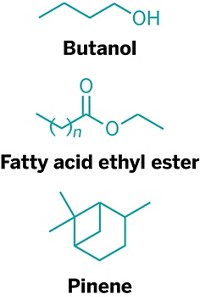Advertisement
Grab your lab coat. Let's get started
Welcome!
Welcome!
Create an account below to get 6 C&EN articles per month, receive newsletters and more - all free.
It seems this is your first time logging in online. Please enter the following information to continue.
As an ACS member you automatically get access to this site. All we need is few more details to create your reading experience.
Not you? Sign in with a different account.
Not you? Sign in with a different account.
ERROR 1
ERROR 1
ERROR 2
ERROR 2
ERROR 2
ERROR 2
ERROR 2
Password and Confirm password must match.
If you have an ACS member number, please enter it here so we can link this account to your membership. (optional)
ERROR 2
ACS values your privacy. By submitting your information, you are gaining access to C&EN and subscribing to our weekly newsletter. We use the information you provide to make your reading experience better, and we will never sell your data to third party members.
Biological Chemistry
Engineered Yeast Turn Three Carbon Compounds Into Ethanol
Biofuels: Yeast designed to ferment compounds found in treated biomass could boost biofuel production
by Jyoti Madhusoodanan
February 10, 2015
When biofuel producers turn agricultural waste into ethanol, they start by treating the biomass with acid to hydrolyze complex carbohydrates into simpler sugars that microbes can munch on to make the alcohol. But that hydrolysis also produces compounds, such as acetate, that can inhibit microbial growth. Now, researchers have engineered yeast that aren’t fazed by acetate. In fact, they use it, and two other sugars from the hydrolyzed carbohydrates, to make ethanol (ACS Synth. Biol. 2015, DOI: 10.1021/sb500364q).
Commercial biofuel production relies on engineered strains of yeast that can ferment sugars found in acid-treated biomass and churn out ethanol. Making strains of yeast that can consume many such sugars at the same time could improve the efficiency of ethanol production. By engineering yeast to simultaneously use multiple sugars and also remove inhibitors such as acetate, researchers hope to create a microbe that can produce ethanol in greater yields—and more efficiently—than currently used commercial yeast do.
Previously, Yong-Su Jin of the Energy Biosciences Institute, a research consortium funded by BP, and his colleagues had created strains of yeast (Saccharomyces cerevisiae) that spit out ethanol by metabolizing cellobiose and xylose, two sugars produced from acid-treated biomass (Proc. Natl. Acad. Sci. USA 2011, DOI: 10.1073/pnas.1010456108). They also developed strains that feed on xylose and acetate (Nat. Commun. 2013, DOI: 10.1038/ncomms3580). In the current study, they combined modular parts from the two strains to create a new one that could use all three compounds at the same time.
The researchers started with a yeast strain they had previously developed to efficiently ferment xylose by directing the sugar into the cell’s normal metabolic pathways, which produce ethanol. They next added the genes needed to funnel cellobiose into that same metabolic process. To improve this strain, they fed the yeast cellobiose and xylose for several generations and selected the microbes that were the most efficient fermenters. At the end of this evolutionary process, the strain produced approximately twice as much ethanol as the starting one and carried up to 20 additional copies of the cellobiose-metabolizing genes, Jin says.
Finally, the researchers added genes to reduce acetate to ethanol. This final strain contained 10 additional genes compared with ordinary yeast. It can simultaneously consume all three compounds under anaerobic conditions to produce 24% greater ethanol yields than the strain that consumed just the two sugars.
The key to this yield improvement was likely the removal of acetate’s toxic effects, rather than merely adding another carbon source to the yeast’s diet, explains Yasuo Yoshikuni of the Joint Genome Institute, a Department of Energy research center in California, who was not involved with the study.
Although acetate is one of the most abundant and potent microbial inhibitors present in hydrolyzed biomass, it is only one of several. In future work, Jin and his coauthors plan to add the xylose and acetate pathways to strains of yeast used commercially, which are more robust than the laboratory strain used in the current study and more suited to industrial ethanol production.




Join the conversation
Contact the reporter
Submit a Letter to the Editor for publication
Engage with us on Twitter